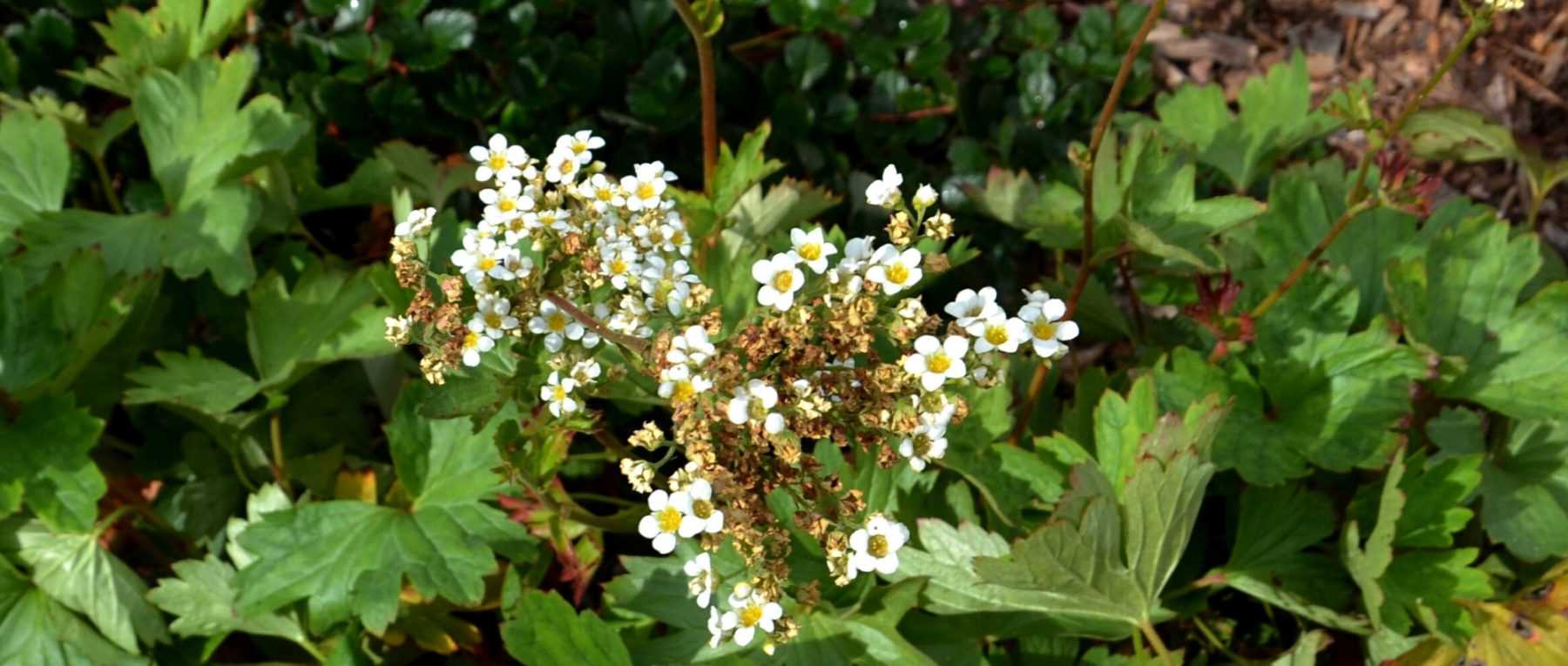
# Boykinia: Planting, Growing and Caring ## Introduction Boykinia is a charming perennial plant that thrives in moist, shady conditions, making it an excellent choice for woodland gardens or damp borders. With its attractive foliage and delicate flowers, this plant adds texture and interest to shaded areas of the garden. ## Planting Boykinia ### When to Plant The ideal time to plant young Boykinia plants is in spring or autumn when the soil is moist and temperatures are mild. ### Where to Plant Choose a location with: - Partial to full shade - Moist, humus-rich soil - Good drainage (though it tolerates damp conditions) ### How to Plant 1. Prepare the planting area by enriching the soil with organic matter 2. Dig a hole twice as wide as the root ball 3. Place the plant at the same depth it was in its container 4. Backfill with soil and firm gently 5. Water thoroughly after planting ## Growing Conditions ### Soil Requirements Boykinia prefers: - Moist, well-drained soil - Neutral to slightly acidic pH - Rich in organic matter ### Light Requirements - Thrives in partial to full shade - Can tolerate morning sun in cooler climates ### Watering Needs - Keep soil consistently moist - Water regularly during dry spells - Avoid waterlogging ## Care and Maintenance ### Feeding - Apply a balanced fertiliser in spring - Top dress with compost annually ### Pruning - Remove spent flower stems to encourage new growth - Cut back foliage in late autumn if it becomes untidy ### Winter Care - Mulch around plants in autumn to protect roots - In very cold areas, provide extra protection with horticultural fleece ## Propagation Boykinia can be propagated by: - Division in spring or autumn - Seed (though this method is less reliable) ## Common Problems Watch out for: - Slugs and snails (especially on young plants) - Powdery mildew in dry conditions - Root rot in poorly drained soils ## Companion Plants Boykinia pairs well with: - Ferns - Hostas - Astilbes - Other shade-loving perennials With its attractive foliage and tolerance for shade, Boykinia makes a wonderful addition to woodland gardens and shady borders. By providing the right growing conditions and basic care, you can enjoy this charming plant for many years.
Contents
Boykinia in a nutshell
- Boykinia are delightful little perennials with airy flowering
- These cousins of saxifrages produce beautiful little star-shaped white flowers in early summer
- Their rounded or kidney-shaped foliage with dentate edges is also appreciated
- They thrive in partial shade, in fresh, humus-bearing, non-calcareous soil, and are perfect for shaded rockeries
Our expert's word
Boykinia are small rhizomatous perennial plants very closely related to saxifrages, native mainly to North America. They bear rosette leaves and produce panicles of small white flowers, sometimes pinkish, in early summer. Their very light and airy, ethereal panicles are particularly appreciated. Discover Boykinia major, which bears beautiful white flowers with pale yellow centres, Boykinia occidentalis, with its very fine and delicate small flowers, and Boykinia aconitifolia, with aconite-like leaves.
Boykinia are shade or partial shade plants that thrive in cool, fertile soil, free from lime. Once established, they require virtually no maintenance, apart from occasional watering during dry spells. These are very hardy plants with little susceptibility to diseases and parasitic pests.
Boykinia are plants with a delicate and light habit: they may not be spectacular, but they are ideal for brightening up a shady spot or creating a beautiful natural scene in a cool, shaded rockery alongside saxifrages, tiarellas, ferns… Discover all our tips for successfully growing them in your garden!
Botany
Botanical data
- Latin name Boykinia sp.
- Family Saxifragaceae
- Common name Boykinia
- Flowering generally in June-July
- Height between 30 and 70 cm when in flower
- Sun exposure partial shade
- Soil type moist and humus-bearing, non-calcareous
- Hardiness -15°C to -20°C
Boykinia comprises 10 species of herbaceous perennial plants with rootstocks, primarily native to the United States, more rarely to Japan. They mainly grow in cool woodlands, in crevices and rockeries, along stream banks, predominantly in mountainous regions, sometimes in lowland areas.
Boykinia are still relatively obscure plants, little known and rarely found in gardens. Yet they possess fine ornamental qualities, ideal for enhancing shady rockeries, and require minimal attention once established. Boykinia are fully hardy, capable of withstanding temperatures as low as -15°C, even -20°C.
Boykinia belongs to the saxifrage family, Saxifragaceae, which includes around 600 species. This family also features other ornamental plants such as bergenias, astilbes, heucheras, rodgersias, tellimas… These are mainly herbaceous shade-loving perennials, with palmate foliage and five-petalled flowers grouped in compound inflorescences.

Flowers of Boykinia richardsonii, Boykinia occidentalis, Boykinia major and Boykinia lycoctonifolia (photos: Denali National Park and Preserve / Walter Siegmund / Tom Hilton / Qwert1234)
Boykinia form basal rosettes and spread slowly via underground rootstocks, without becoming invasive. When in flower, they typically reach between 30 cm and 70 cm in height, sometimes up to 1 m.
In early summer (June-July), and in April-May for Boykinia jamesii, Boykinia unfurl panicles of flowers above their foliage. These panicles are borne on upright flowering stems, green or reddish in colour. Boykinia bear small single flowers measuring about 1 cm in diameter (up to 2 cm for Boykinia jamesii). They consist of five white petals, five green sepals, five stamens (male reproductive organs bearing pollen) and two styles (female reproductive organs receiving pollen). The flowers are pure white, sometimes pink. The petals are white and very faintly veined with pink in Boykinia richardsonii. The flower centres (between the petals) are yellow or green.
Their very light and elegant inflorescences are much appreciated. They resemble the flowering of saxifrages or gypsophilas. Boykinia are ideal for bringing brightness to shady garden corners! Moreover, they have a very natural style and will easily find their place alongside other light and delicate blooms to create a true woodland atmosphere.
Boykinia jamesii stands out with its bright pink flowers composed of larger, more spaced petals than other species. Additionally, they are grouped in dense, narrow clusters, whereas the inflorescences of other Boykinia are much lighter and airier. As for Boykinia rotundifolia, it is distinguished by its tubular flowers with a swollen calyx, similar to Silene vulgaris.
Like many Saxifragaceae, Boykinia form rosettes of leaves, at ground level. The flowering stem also bears a few leaves (cauline leaves). The leaves are reniform or cordate, with dentate leaf margins. The basal leaves have long petioles while the cauline leaves are sessile or borne on short petioles. The leaf veins are palmate (radiating from the base in a fan-like arrangement). The leaves are medium to dark green, perfectly setting off the white flowering. The different species have fairly similar leaves, more or less divided. Those of Boykinia rotundifolia are particularly rounded while those of Boykinia aconitifolia resemble aconite foliage. Boykinia foliage is deciduous.
After flowering, Boykinia produce capsules (dry fruits that open at ripeness) containing black, ellipsoid seeds. These seeds can be collected for sowing.

Foliage of Boykinia lycoctonifolia, Boykinia aconitifolia and Boykinia rotundifolia (photos: Qwert1234 / Salicyna / Anthony Valois – National Park Service)
The main varieties of Boykinia
The Most Popular Varieties
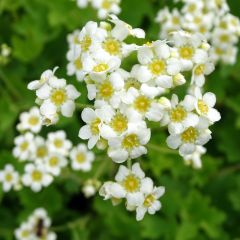
Boykinia major
- Flowering time August
- Height at maturity 70 cm
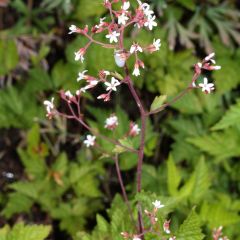
Boykinia occidentalis
- Flowering time February
- Height at maturity 40 cm
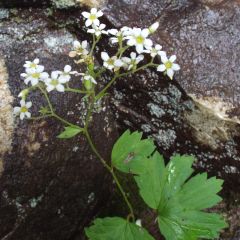
Boykinia aconitifolia
- Flowering time July, August
- Height at maturity 60 cm
Discover other Boykinia
View all →Available in 1 sizes
Available in 1 sizes
Available in 1 sizes
Planting Boykinia
Where to plant?
Boykinia are shade-loving plants that thrive in cool, rich, humus-bearing soil. They prefer woodland-type soils and can even tolerate heavy soils. They favour slightly acidic ground. If your soil is alkaline, you can grow Boykinia in pots or create a planting pocket with a rich, acidic and well-draining substrate.
Boykinia are perfect plants for cool, shady rockeries. They also work well in woodland gardens or pond edges. You could even create a miniature rockery in a trough by pairing Boykinia with saxifrages, houseleeks, Lewisia… Boykinia can be planted in stone walls, provided there’s enough space between the stones to create small pockets of substrate, filled with a mix of compost, coarse sand and well-rotted manure. Boykinia jamesii is particularly suited to wall planting as it requires very little substrate and can establish itself in cracks between stones.
Discover our guide ‘Creating a rockery: our tips for success’
When to plant?
Plant Boykinia in spring, around April, or in autumn, during September-October. The key is to avoid frost periods or extreme heat.
How to plant?
As Boykinia are small, delicate and rather understated plants, we recommend planting several together for greater impact. Space them about 40 cm apart.
- Start by digging a planting hole roughly twice the size of the rootball, or find a gap between stones in a rockery or wall.
- Add a mix of compost blended with well-rotted manure and coarse sand.
- Remove the Boykinia from its pot and plant it.
- Backfill with substrate and firm gently.
- Water thoroughly.
Continue watering regularly in the weeks after planting.
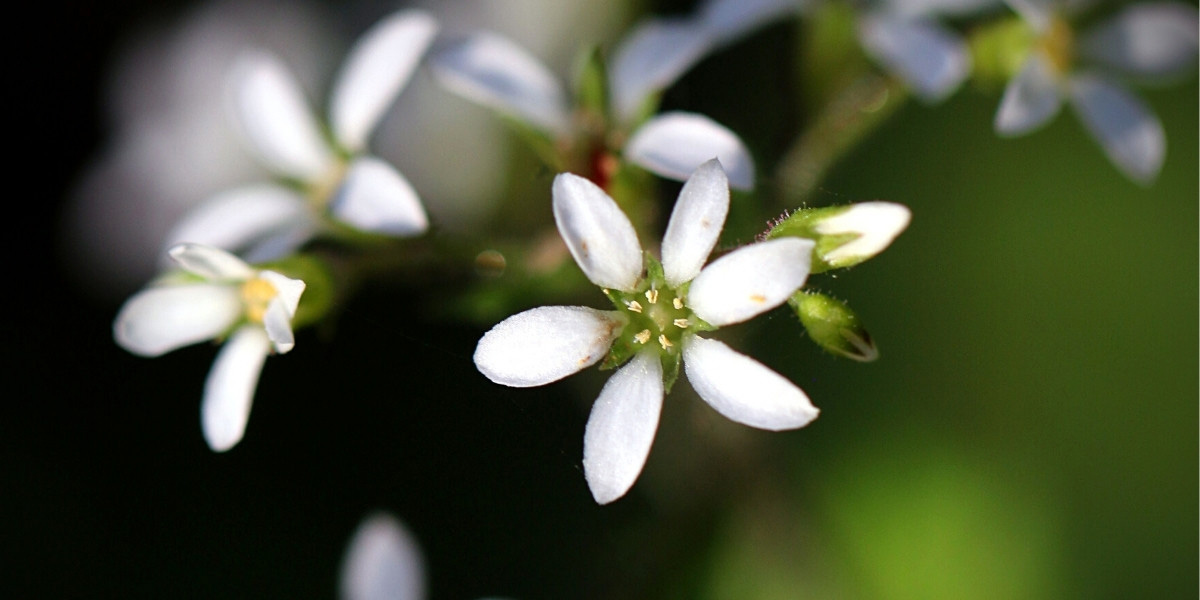
Boykinia elata (photo USFWS – Pacific Region)
Maintenance
Once planted, the Boykinia requires very little attention. It is resistant to diseases and parasitic pests. Water it during dry spells to keep the soil slightly moist. If your water is hard, use rainwater if possible. You may add some well-rotted compost to enrich the soil and support flowering.
You can remove faded flowers for aesthetic reasons and to relieve the plant, unless you wish to harvest the seeds for sowing.
Propagation
Boykinia can be propagated by sowing or division.
Sowing
We recommend placing the seeds in the refrigerator for a few weeks before sowing to break their dormancy. Sow them under cover in late winter or early spring.
- Prepare a pot with special sowing compost.
- Lightly firm and level the surface.
- Sow the seeds on the surface.
- Cover them with a thin layer of sand or compost and gently firm.
- Water with a fine spray.
Transplant the seedlings into individual pots once they reach 5 cm in height or are large enough to handle safely.
Division
Boykinia spreads gradually via its rootstock. If you have a well-established, mature clump that has been in place for several years, you can divide it.
- Dig widely to avoid damaging the Boykinia and its roots.
- Carefully separate it, ensuring each new young plant has roots.
- Replant in a new location after preparing the soil, or in a pot.
- Water generously.
Association
Boykinia will find its perfect spot in a cool, shady rockery. It makes an excellent companion for saxifrages. Incorporate plants with decorative foliage, such as Carex morrowii ‘Ice Dance’, ophiopogon, or hostas… Consider adding ferns, such as Cyrtomium falcatum, Polypodium vulgare, or Asplenium scolopendrium. Enjoy the bright, delicate flowering of Chiastophyllum oppositifolium, also known as Golden Drop.
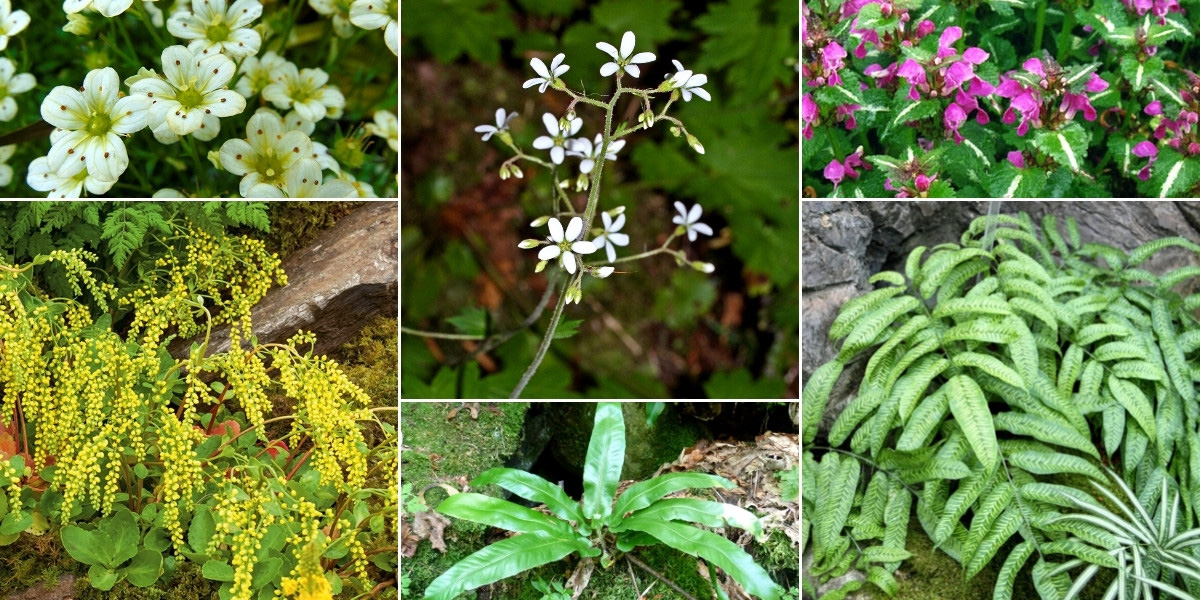
Boykinia is perfect for a shaded rockery. Saxifraga arendsii ‘Pixie White’, Boykinia occidentalis (photo Walter Siegmund), Lamium maculatum ‘Roseum’, Chiastophyllum oppositifolium, Asplenium scolopendrium (photo Florian Grossir) and Coniogramme emeiensis
You can also create a miniature rockery in a trough, using small alpine perennials. Include plants with foliage that forms small carpets, cushions, or rosettes close to the soil, such as houseleeks, saxifrages, Lewisia, and Azorella. You’ll create a charming miniature garden, highly decorative and easy to place on a terrace or near the house for maximum enjoyment.
You can design a wild and natural shade garden with Boykinia. It works well at the front of a border or along a pathway, alongside ferns, hostas, heucheras, and tiarellas. Also consider Geranium nodosum and the delicate flowering of Thalictrums.
Useful resources
- Discover our range of Boykinia
- To pair with Boykinia: “10 plants for creating a shady rock garden”
- Subscribe!
- Contents





































Comments